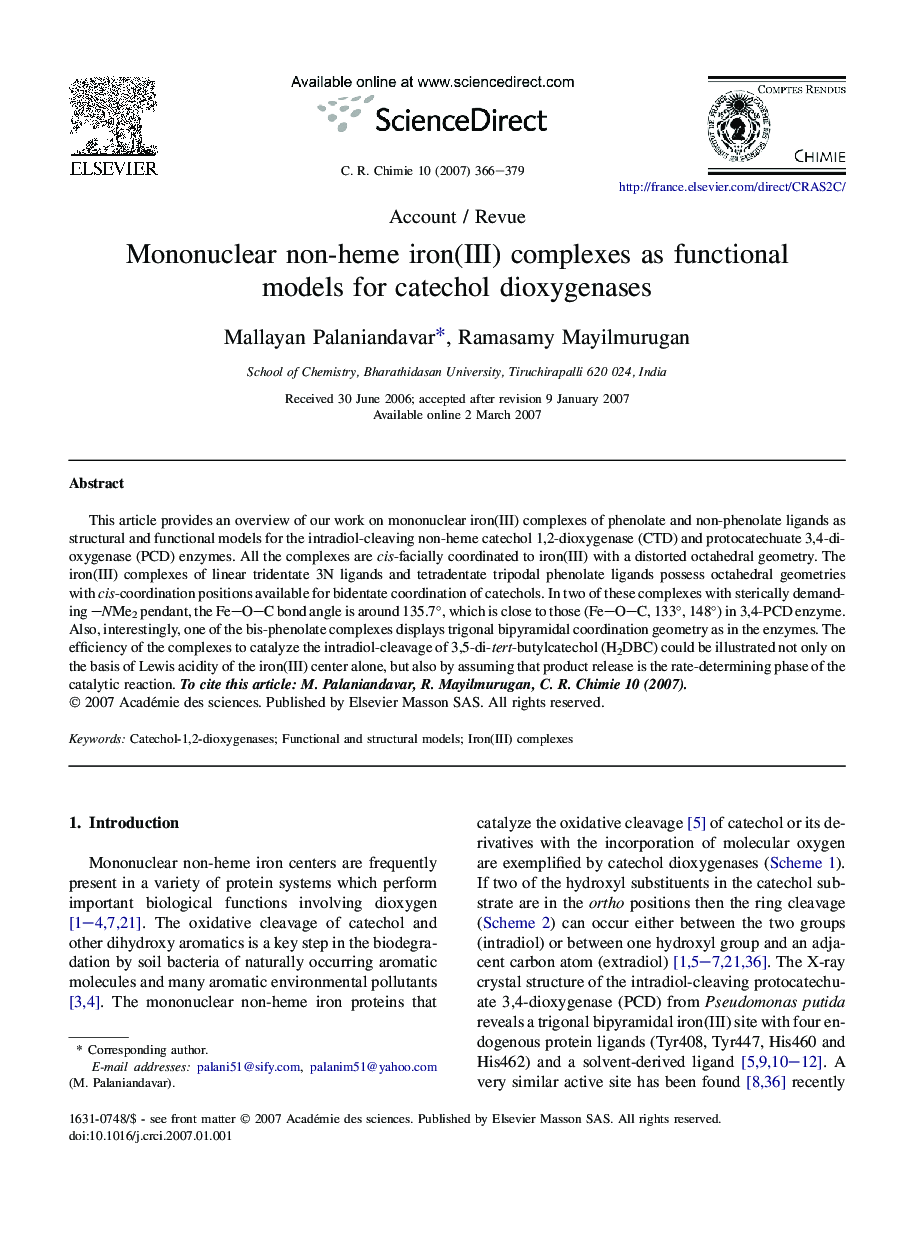| Article ID | Journal | Published Year | Pages | File Type |
|---|---|---|---|---|
| 171080 | Comptes Rendus Chimie | 2007 | 14 Pages |
This article provides an overview of our work on mononuclear iron(III) complexes of phenolate and non-phenolate ligands as structural and functional models for the intradiol-cleaving non-heme catechol 1,2-dioxygenase (CTD) and protocatechuate 3,4-dioxygenase (PCD) enzymes. All the complexes are cis-facially coordinated to iron(III) with a distorted octahedral geometry. The iron(III) complexes of linear tridentate 3N ligands and tetradentate tripodal phenolate ligands possess octahedral geometries with cis-coordination positions available for bidentate coordination of catechols. In two of these complexes with sterically demanding –NMe2 pendant, the Fe–O–C bond angle is around 135.7°, which is close to those (Fe–O–C, 133°, 148°) in 3,4-PCD enzyme. Also, interestingly, one of the bis-phenolate complexes displays trigonal bipyramidal coordination geometry as in the enzymes. The efficiency of the complexes to catalyze the intradiol-cleavage of 3,5-di-tert-butylcatechol (H2DBC) could be illustrated not only on the basis of Lewis acidity of the iron(III) center alone, but also by assuming that product release is the rate-determining phase of the catalytic reaction.
